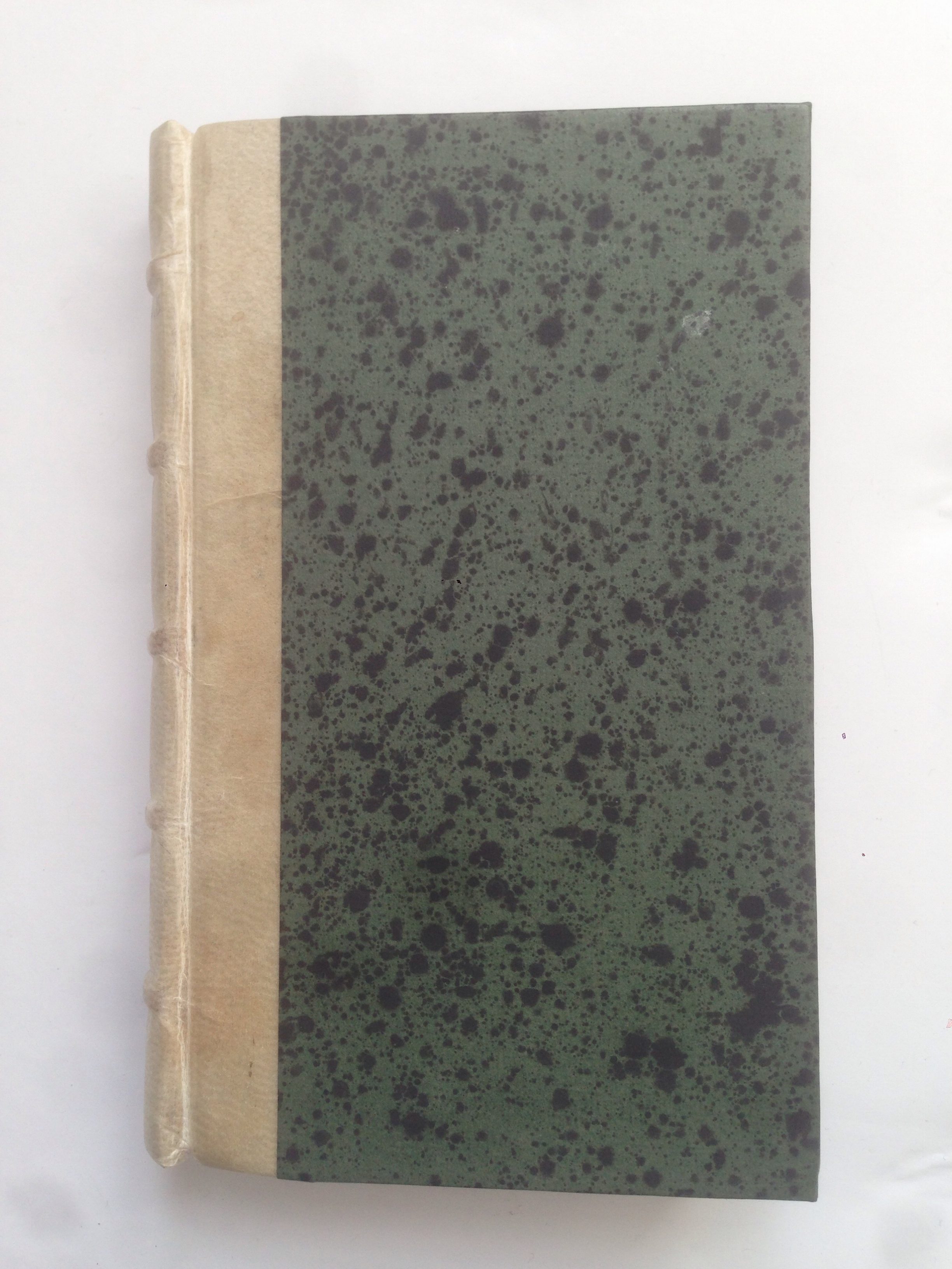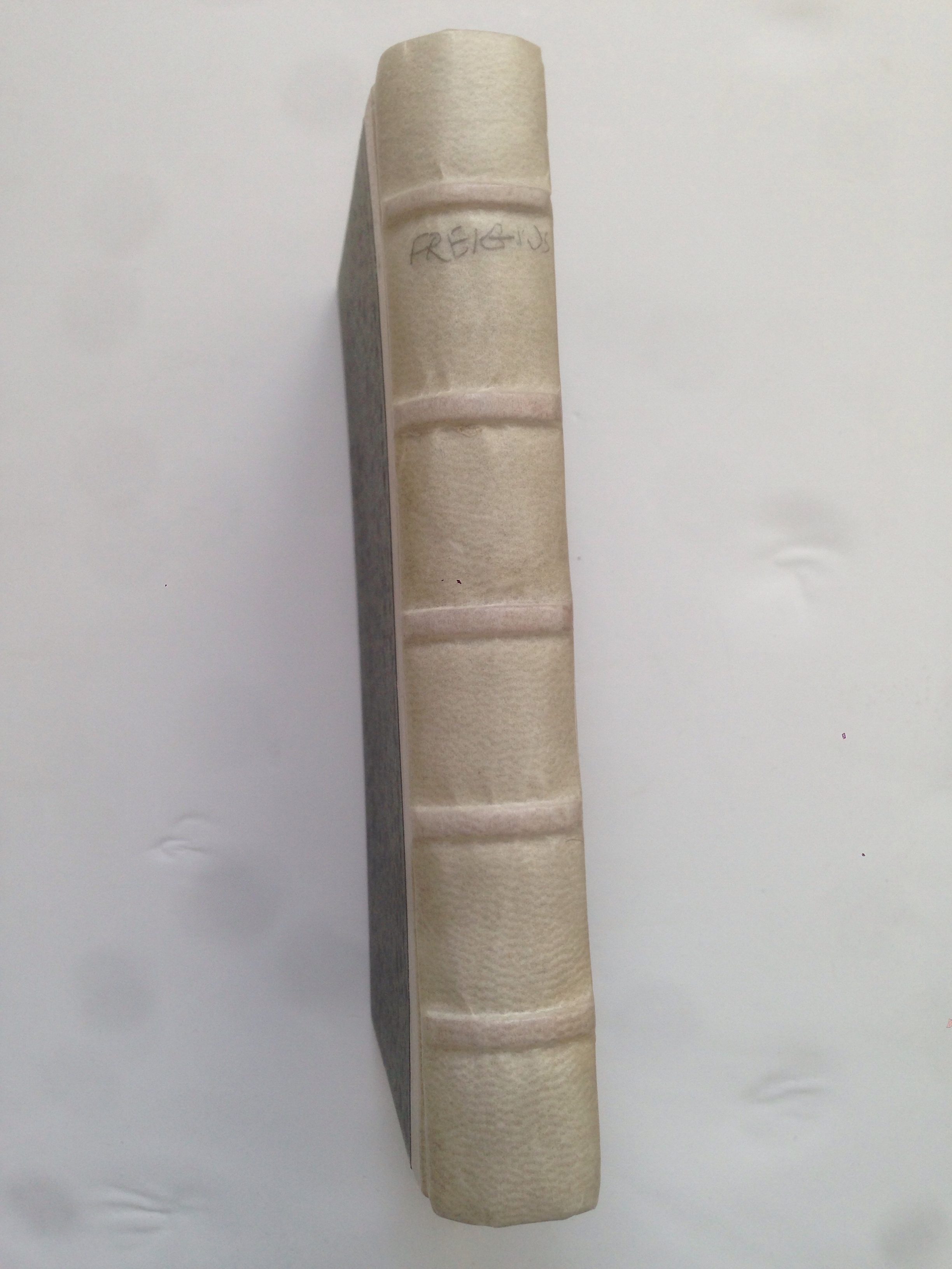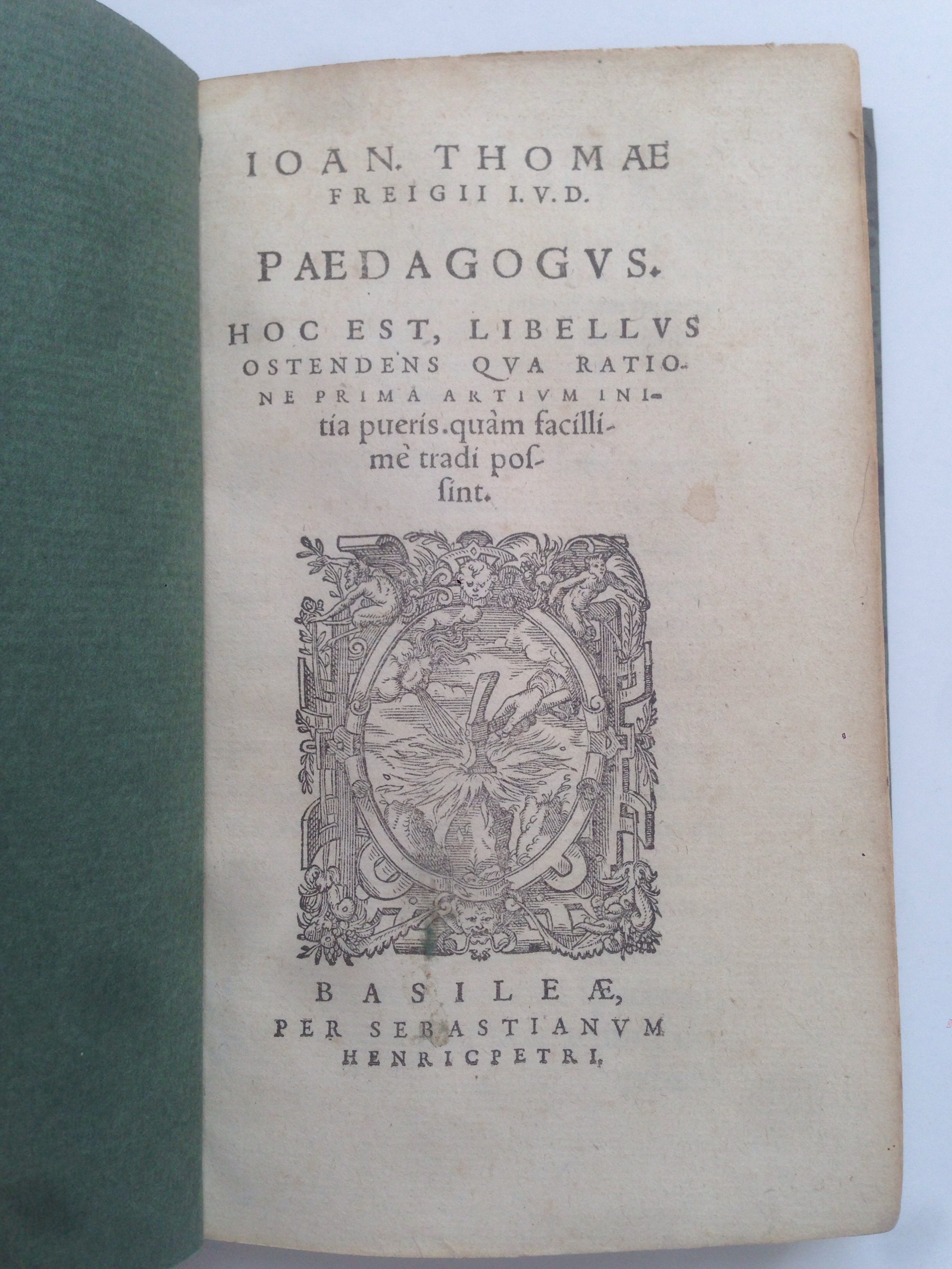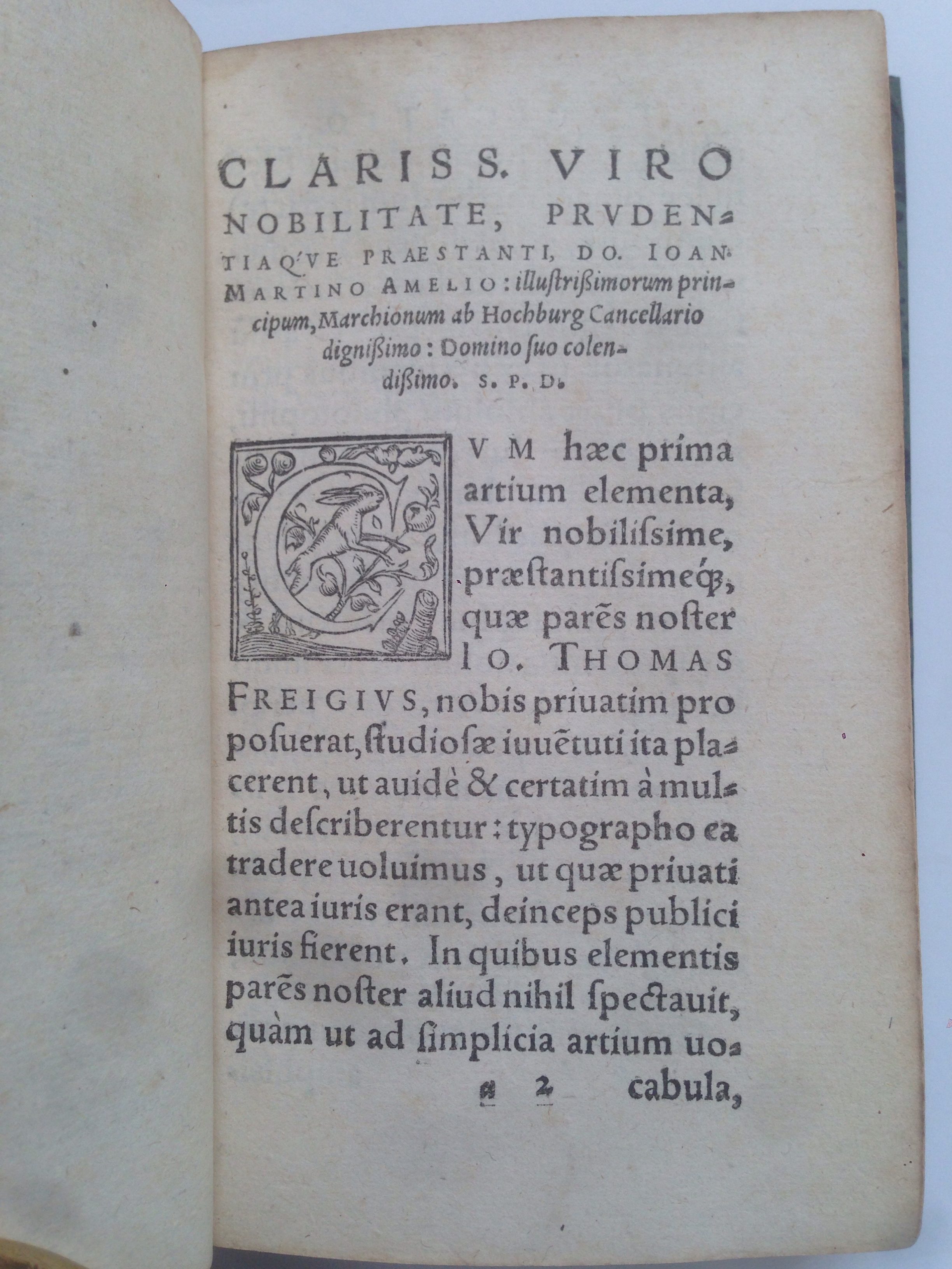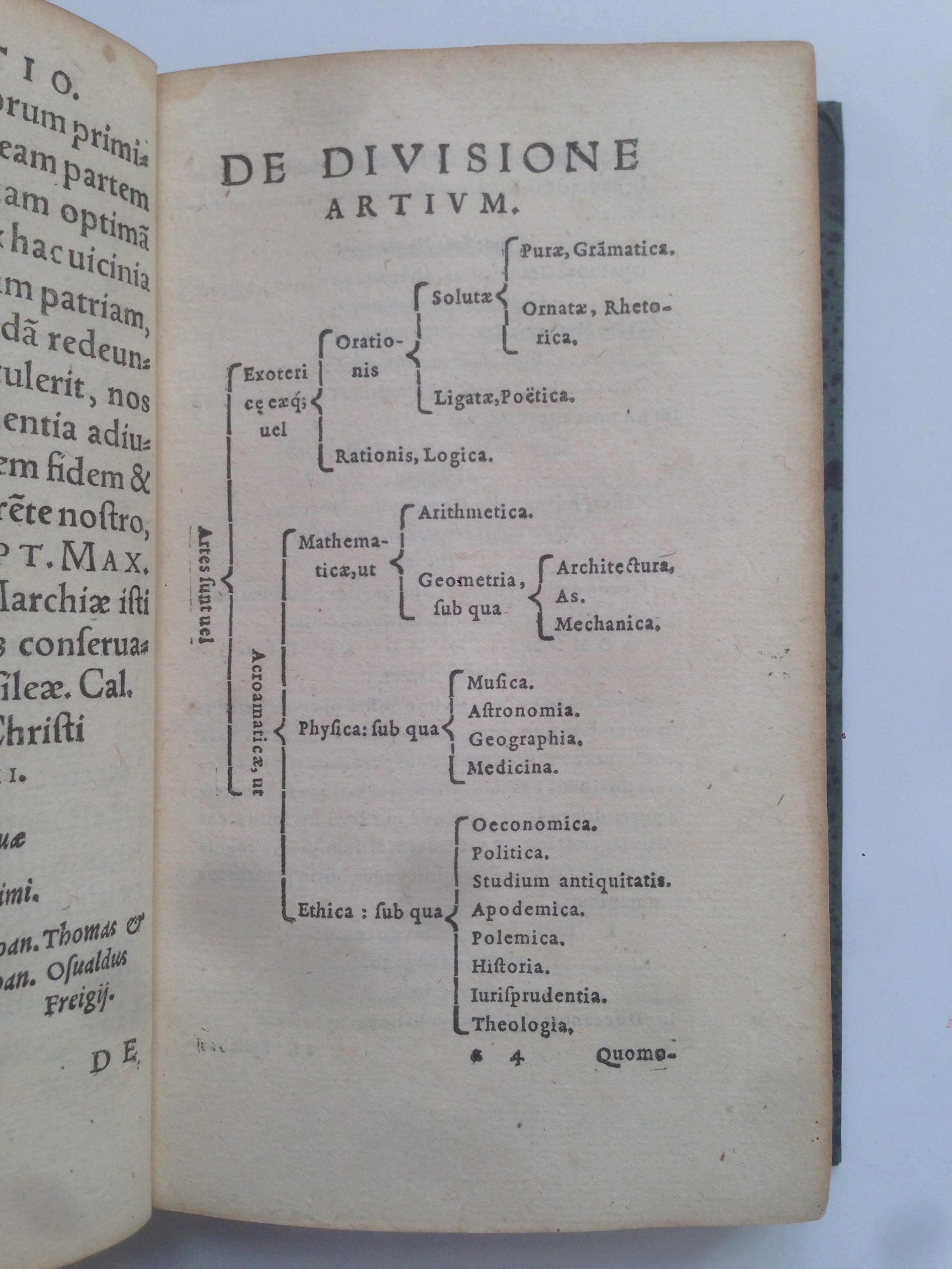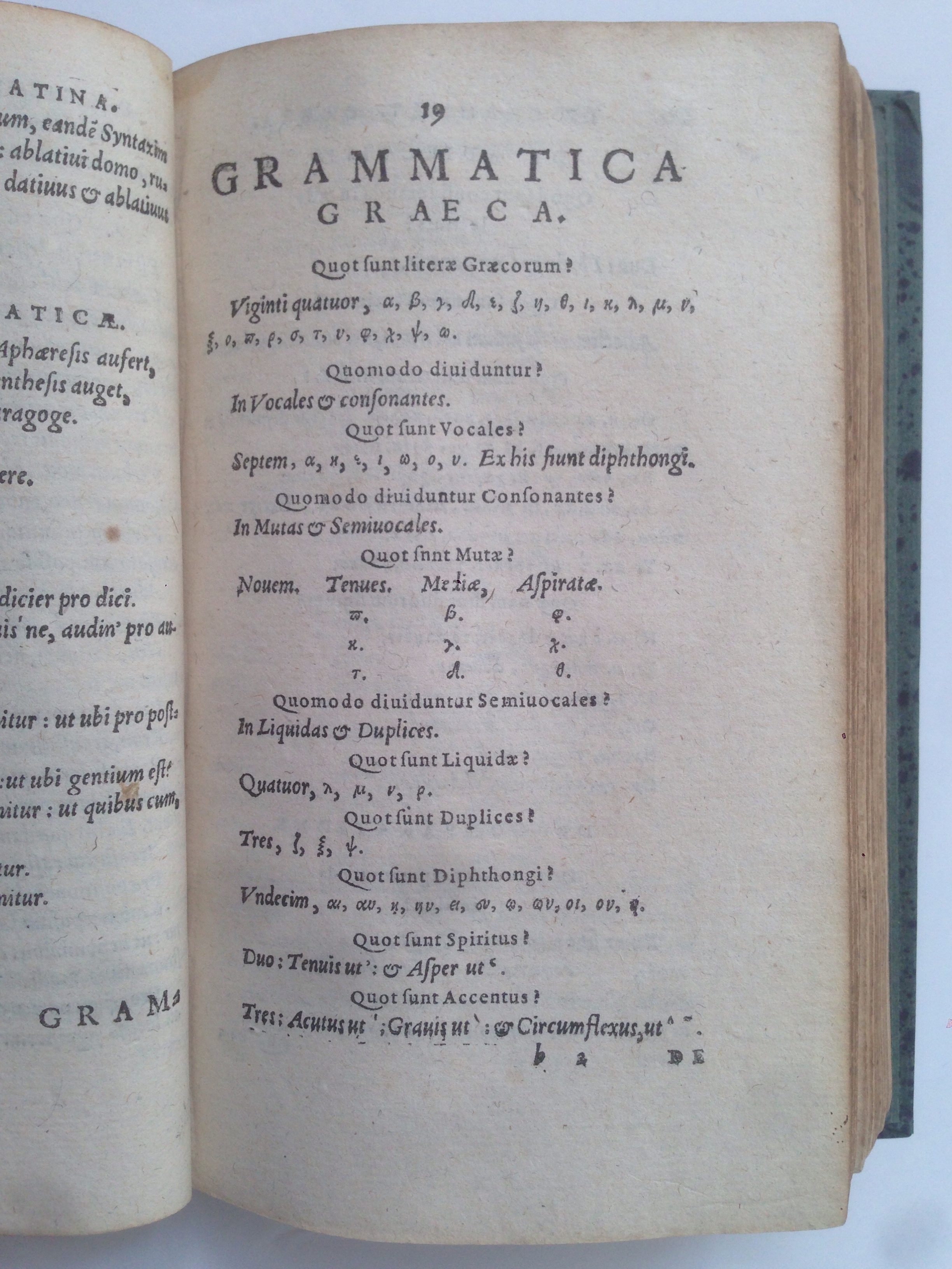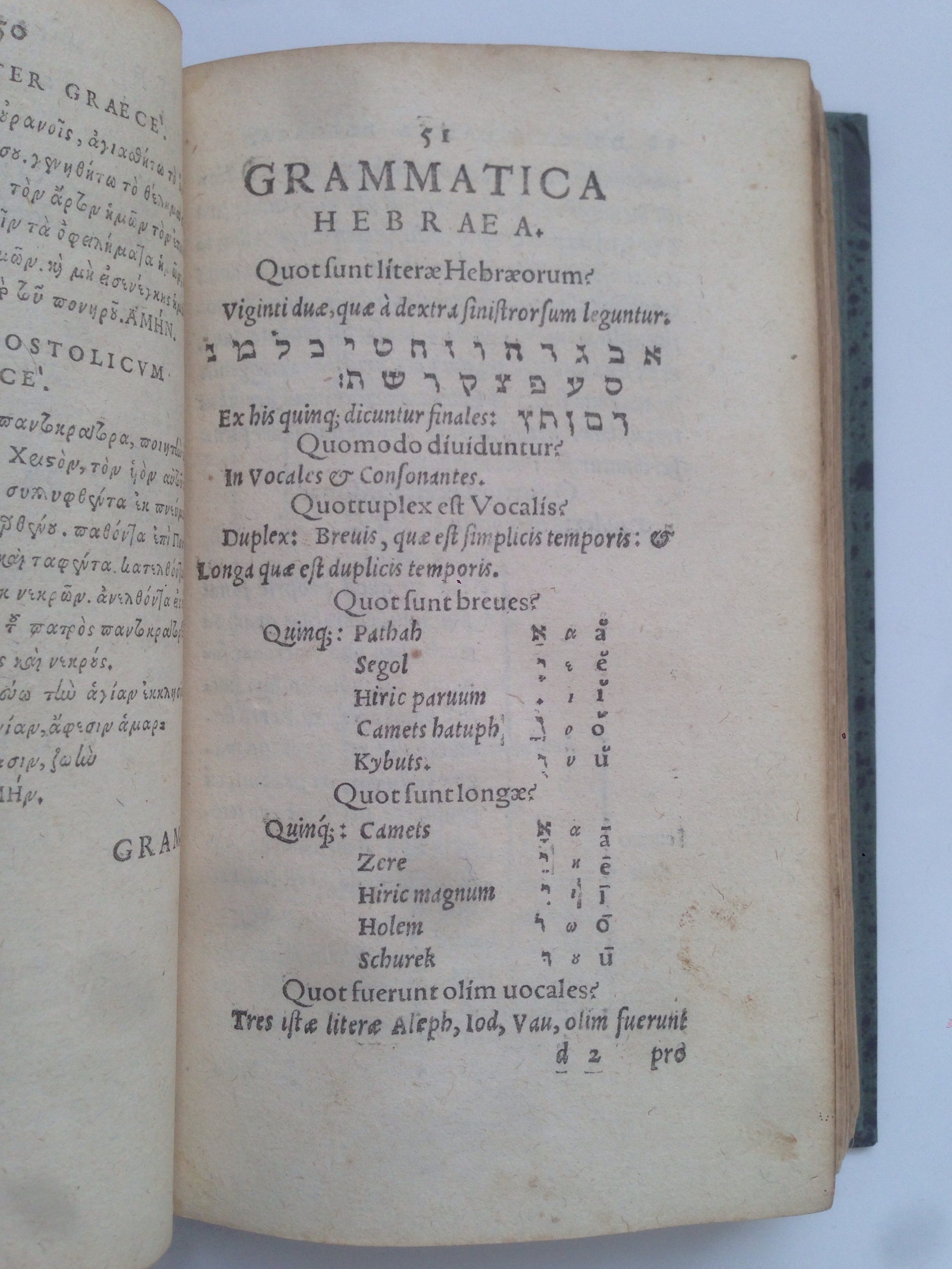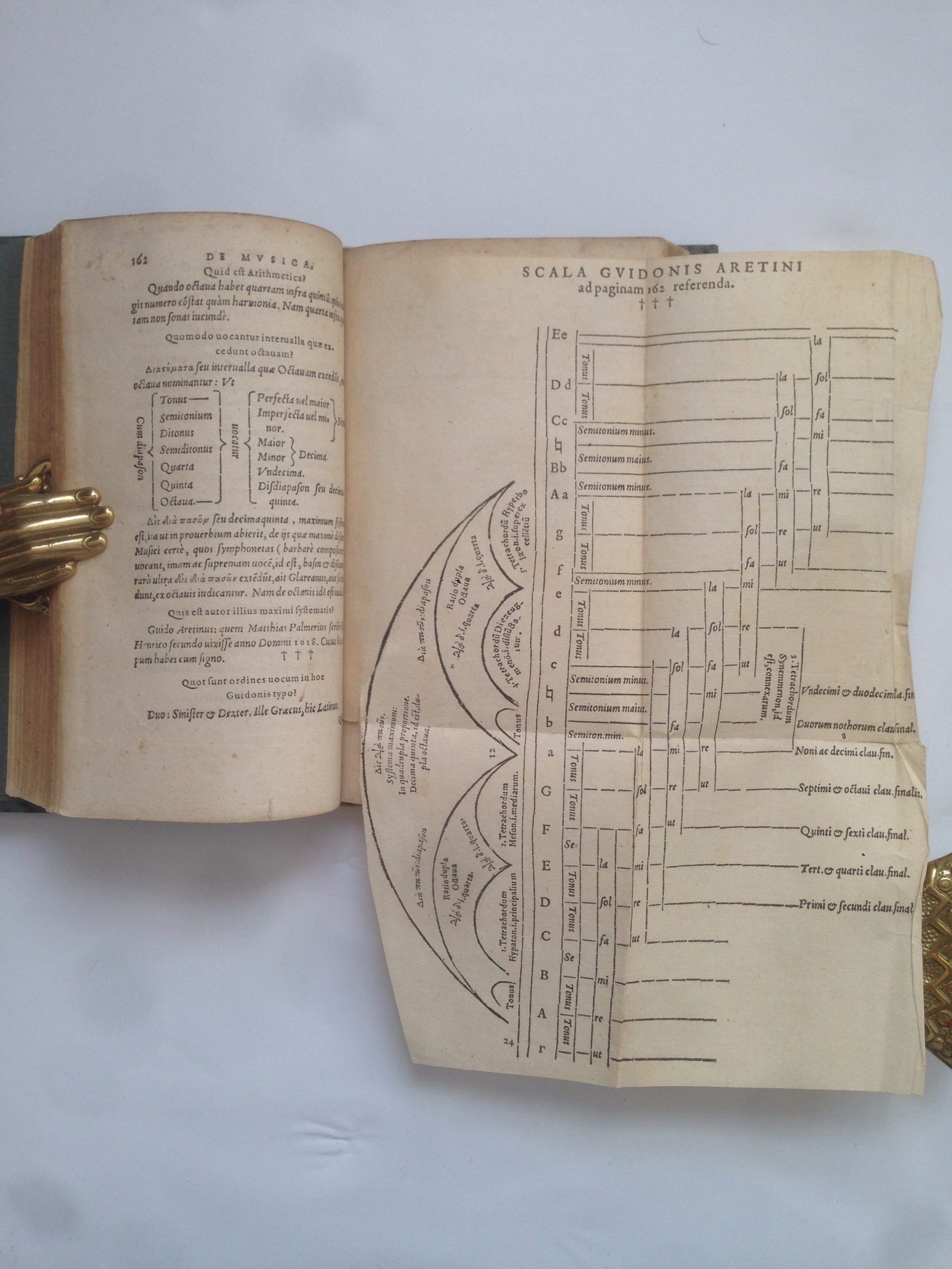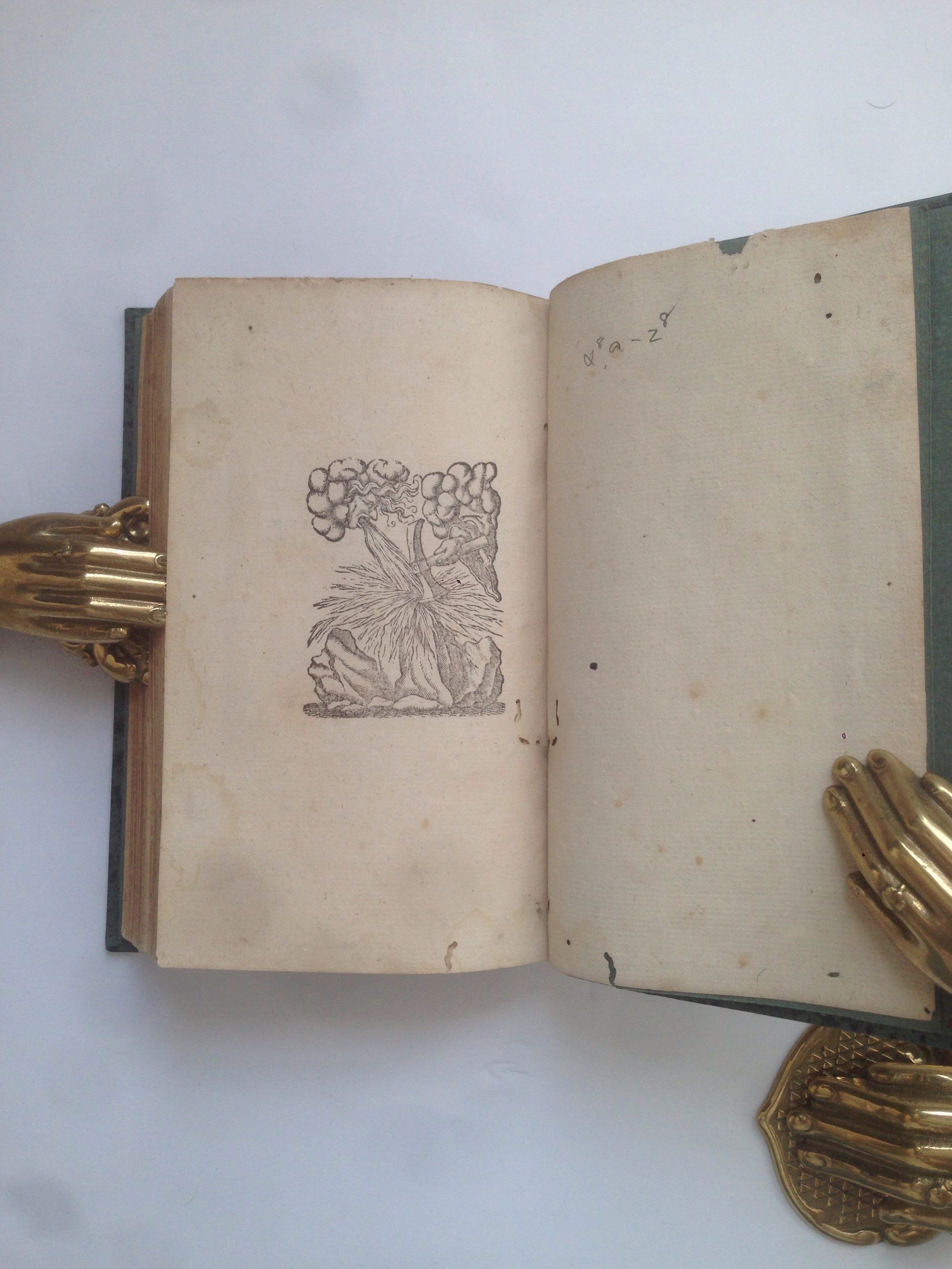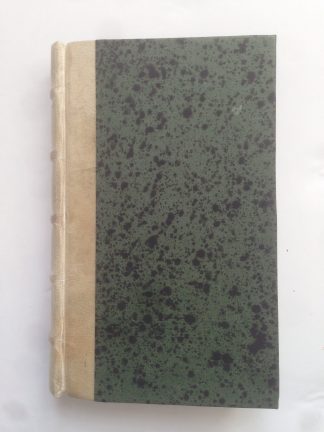FREIG, Johannes Thomas
Paedagogus
Basel, Sebastian Henric Petri, 1582£2,250.00
FIRST EDITION. 8vo, pp. (16), 366, (2). Roman, Italic, Greek and Hebrew letter. Large printer’s woodcut device on title and last verso, one decorated initial representing a rabbit; folding table after p. 162, woodcut illustration on p. 262 representing a bridge, printed music. Light age yellowing, very rare spotting and staining, paper flaws at head of p. 161 partly affecting half a dozen lines of text, small worm trail to lower margin of last gathering. A very good and clean copy in quarter vellum over boards C1900.
First edition of this interesting and popular early school book, intended as an introduction to all the subjects of humanist education.
German philosopher and jurist, the Calvinist Johannes Thomas Freig (1543-1583) was a pupil and the first biographer of the famous teacher and educational reformer Pierre de La Ramée (Ramus). Freig was professor of logic and rhetoric in Freiburg and Basel, later becoming rector of the school at Altdorf. He studied Cicero’s works and extensively wrote on philosophy. He also was responsible for the influential “Latina grammatica pro schola Altorfina Noribergensium” (1580).
Freig was inspired by the Ramist logical method according to which discourse is founded on arguments or commonplaces. The “Paedagogus” summarises the ideal curriculum focused on classical learning and religious education in the biblical languages (Greek, Hebrew and Latin), by means of dichotomous tables and an analysis expounded in the form of question and answer. The work starts with Freig’s dedicatory letter to the prince of Marche (Italy) Giovanni Martino Amelio, providing information on the work’s contents and recalling the friendship between the noble Amelio and his father, Nicholas Freig. Then, after a classification of the liberal arts, including a reference list of the most important authors – mainly classical – and a Latin epigram by the French poet Bartelon Pantaleón from Ravières (Bourgogne), the work is divided into 24 chapters each dealing with a different subject. They concern Latin, Greek and Hebrew grammar, with particular attention to classical and biblical (Psalms) texts; French conversation on various cultural topics (wine, food, places of the house); rhetoric (figures of speech); poetics; logic; geometry (the axis and its use in astronomy and measuring of land; coining); architecture (materials, buildings and their arrangement, with a paragraph on the library); physics, based on Tolomeus’ model; then ethics, economics, politics, military activities (armies, armour, encampment); history; law and medicine (diseases and their symptoms, with a section on the plague).
The chapter on music is the largest and highlights the distance between theory and musical practice. It especially concerns vocal music together with vernacular psalmody and Latin hymns. Recommended books are Boethius’s and Heinrich Glarean’s Dodecachordon (1547).
Adams, F 1013; BM STC Ger., p. 320. Not in Brunet or Graesse.In stock


